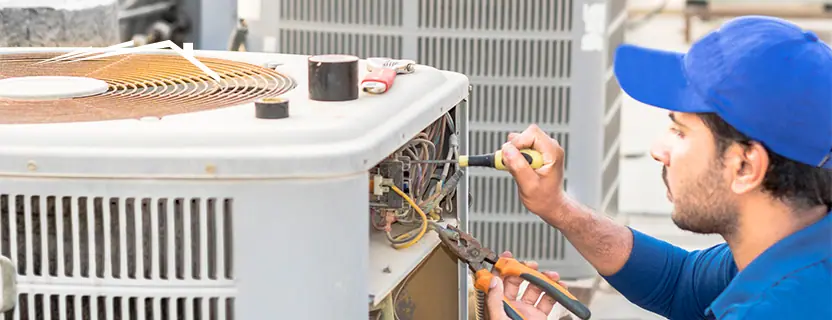1 Source Portable Air - Questions
1 Source Portable Air - Questions
Blog Article
1 Source Portable Air Things To Know Before You Get This
Table of ContentsThings about 1 Source Portable AirThe Ultimate Guide To 1 Source Portable Air4 Simple Techniques For 1 Source Portable AirRumored Buzz on 1 Source Portable AirAbout 1 Source Portable Air
Although referrals may seem challenging to track, there are ways to determine them quickly and efficiently. On social networks, numerous individuals provide references concerning cooling and heating specialists that are trustworthy and professional throughout an a/c setup, repair service or maintenance task. Given that other individuals can make comments, the procedure of establishing whether or not a company is worth pursuing is never a problem. Ask if any one of them have had current heating and cooling job done and whether or not their experience was sufficient. Numerous locals experience hold-ups when a/c unit solutions are required during time-sensitive situations. This is why each heating and cooling company's terms and plans should be thought about to make sure that the technicians will commute to the community or area where solutions are required.
A business that has actually built a solid track record normally has highly skilled professionals that totally understand how to take on HVAC jobs that involve modern-day and classic tools. Experienced specialists need to always be taken into consideration throughout sophisticated repair and maintenance jobs because the procedures that educated professionals implement are economical. An additional benefit is that skilled air conditioning firm professionals never ever use inappropriate substitute supplies in order to simplify repair work jobs.
Some Known Factual Statements About 1 Source Portable Air
Yeah, at NEXGEN Air, we're experienced Cooling and heating service technicians, yet we recognize that not everyone is. This is for true who have never had to deal with a Cooling and heating issue.
Heating and cooling stands for heating, ventilation, and a/c. 9 basic elements make up a full central air conditioning and heat system. These parts are the heating system, the warmth exchanger, the evaporator coil, the condensing device, cooling agent tubes, the thermostat, the ductwork, the vents, and the heatpump. (Don't fret! We'll describe these parts carefully better down the list.) The heater is your heating system.
There are pros and cons to both, yet we'll cover that in one more section. You can locate your heating system hiding in your basement, garage, or utility storage room. Your heating system's major feature is to warmth air and relocate it right into your air ducts to heat your house. (Enjoyable truth: Heating systems are generally misinterpreted for central heating boilers, yet they're separate appliances). Right here's a great instance of a brand-new Lennox heating system in an utility storage room.
While the heater pushes warm air into your air ducts, the warmth exchanger is the one transforming cold air right into hot air. An additional resident inside the furnace, the evaporator coil absorbs any type of warm from air passing over it to blow amazing air via your vents and into your home. Your condensing unit offers a comparable objective as your evaporator coil but you can find the condensing system outside, generally on the side of your house.
Getting My 1 Source Portable Air To Work

Your home heating, air flow and cooling (A/C) system is one of the most crucial systems in your home, running silently behind-the-scenes to take care of interior temperature levels. Without heating and cooling, you 'd be dealing with cool temperatures in the winter months and uncontrollable warmth in the summer season. Cooling and heating systems additionally ventilate your home, keeping the air high quality healthy and balanced for your household to breathe.
(http://www.add-page.com/details/page_637889.php)Maintain reading to read more concerning picking the right cooling and heating system. There are lots of efficient and inexpensive choices available for upgrading your heating and cooling (Temporary AC unit rental). Choosing the ideal A/c system for your home depends on several individual variables and preferences. A few things to think about include the type of system, power effectiveness and your budget.
The smart Trick of 1 Source Portable Air That Nobody is Talking About
Replacing your system with a similar setup is likely one of the most economical choice. Various other considerations include the climate and weather condition where you live and what fuel sources are readily available. If you intend to discover more concerning exactly how cooling and heating systems function in your area, ask local professionals for recommendations for those in the Southeast, choosing the finest air conditioner system is likely your leading priority.

The right kind of A/c system depends on your needs. Some A/c systems combine heating and air conditioning in one plan, others operate with separate kinds of devices.
Some systems heat water, while others use residual heat in the planet or air to run. The very best system for you depends upon your budget and the tools offered in your location. Heating and cooling systems are managed by a thermostat, where you can establish and monitor temperature levels. If you purchase a clever thermostat, you can change your heating and cooling system over a phone application and incorporate it with other wise technology around your home.
The 5-Minute Rule for 1 Source Portable Air
You do not need a large Air conditioner system to cool a little home. To find the very best choice for you, figure out the square footage of your home and afterwards compare that with size graphes for the HVAC tools. If you buy an air conditioner for a 900-square-foot home, basic standards suggest an unit with about 18,000 British thermal units (BTUs).

Report this page